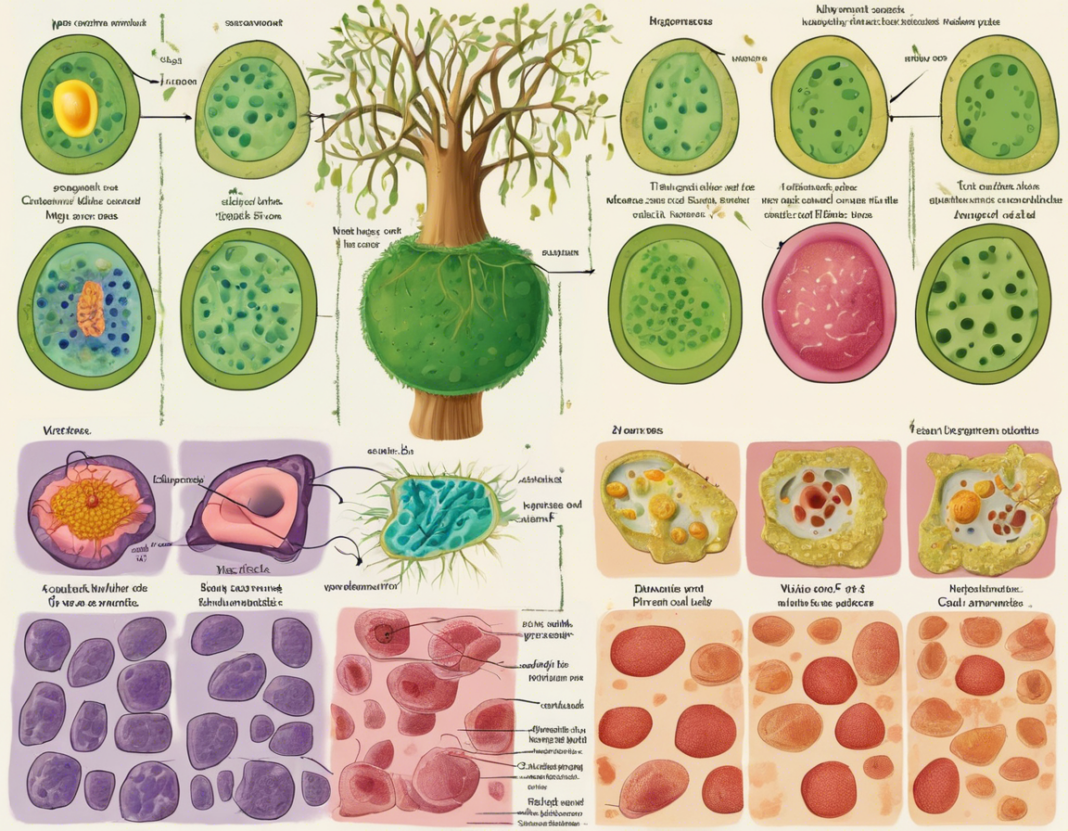Have you ever wondered about the intricate structures that make up living organisms? Cells are the building blocks of all living things, and they come in various shapes and sizes. Two main types of cells are plant cells and animal cells. While they share some similarities, they also have distinct differences that set them apart. In this comprehensive guide, we will delve into the key dissimilarities between plant and animal cells, exploring their structures, functions, and unique characteristics.
Structure of Plant vs. Animal Cells
Plant cells are rectangular in shape and have a rigid cell wall surrounding the cell membrane. This cell wall provides structural support and protection for the cell. Within the cell wall is the cell membrane, which regulates the movement of substances in and out of the cell. Plant cells also contain large vacuoles filled with cell sap, which helps maintain turgor pressure and store nutrients.
In contrast, animal cells are round or irregular in shape and do not have a cell wall. Instead, they have a flexible cell membrane that encloses the cell and controls the passage of materials. Animal cells may have small vacuoles, but they are not as prominent as those in plant cells. Additionally, animal cells contain centrioles, which play a vital role in cell division.
Organelles in Plant and Animal Cells
Both plant and animal cells contain nuclei, which house the cell’s genetic material. However, plant cells have chloroplasts, which are responsible for photosynthesis, the process by which plants convert sunlight into energy. Chloroplasts contain the pigment chlorophyll, giving plants their green color. Animal cells do not have chloroplasts and must obtain energy through other means, such as consuming food.
Another key difference is the presence of mitochondria. Mitochondria are the powerhouses of the cell, producing energy in the form of adenosine triphosphate (ATP). While both plant and animal cells have mitochondria, they are more abundant in animal cells due to their high energy requirements.
Specialized Structures in Plant Cells
Plant cells have several specialized structures that are not found in animal cells. One of these structures is the plastids, which include chloroplasts, chromoplasts, and amyloplasts. Chromoplasts are responsible for pigment synthesis, giving flowers and fruits their vibrant colors. Amyloplasts store starch granules, serving as a food reserve for the plant.
Another unique feature of plant cells is the presence of peroxisomes. Peroxisomes are involved in various metabolic processes, including the breakdown of fatty acids and detoxification of harmful substances. They play a crucial role in maintaining cellular health and function.
Functionality of Plant and Animal Cells
Plant cells are adept at photosynthesis, utilizing chloroplasts to capture sunlight and convert it into energy. This process provides plants with the nutrients they need to grow and thrive. Additionally, plant cells have a rigid cell wall that helps maintain structural integrity and allows plants to stand upright.
Animal cells, on the other hand, are more diverse in their functions. They are involved in processes such as respiration, digestion, and reproduction. Animal cells can move and change shape, allowing organisms to respond to their environment and carry out complex behaviors.
Key Differences Summarized
- Plant cells have a rigid cell wall, while animal cells do not.
- Plant cells contain chloroplasts for photosynthesis, while animal cells do not.
- Plant cells have large vacuoles, while animal cells have smaller vacuoles.
- Plant cells have plastids and peroxisomes, which are not found in animal cells.
- Animal cells have centrioles, which are absent in plant cells.
Frequently Asked Questions (FAQs)
-
Can plant cells live without chloroplasts?
Plant cells can survive without chloroplasts, but they will not be able to carry out photosynthesis, which is essential for their growth and development. -
Do animal cells have a cell wall?
No, animal cells do not have a cell wall. They are surrounded by a flexible cell membrane that encloses the cell. -
What is the main function of mitochondria in cells?
Mitochondria are responsible for producing energy in the form of ATP through cellular respiration. -
Why do plant cells have large central vacuoles?
Central vacuoles in plant cells help maintain turgor pressure, store nutrients, and regulate the cell’s internal environment. -
Are peroxisomes found in both plant and animal cells?
Yes, peroxisomes are present in both plant and animal cells and play a vital role in various metabolic processes.
In conclusion, while plant and animal cells share some similarities, such as having nuclei and mitochondria, they exhibit distinct differences in their structures, organelles, and functionalities. Understanding these variances is key to appreciating the complexity and diversity of life at the cellular level. Whether it’s the chloroplasts of a leaf or the centrioles of a cell undergoing division, each component plays a crucial role in the remarkable symphony of life.

